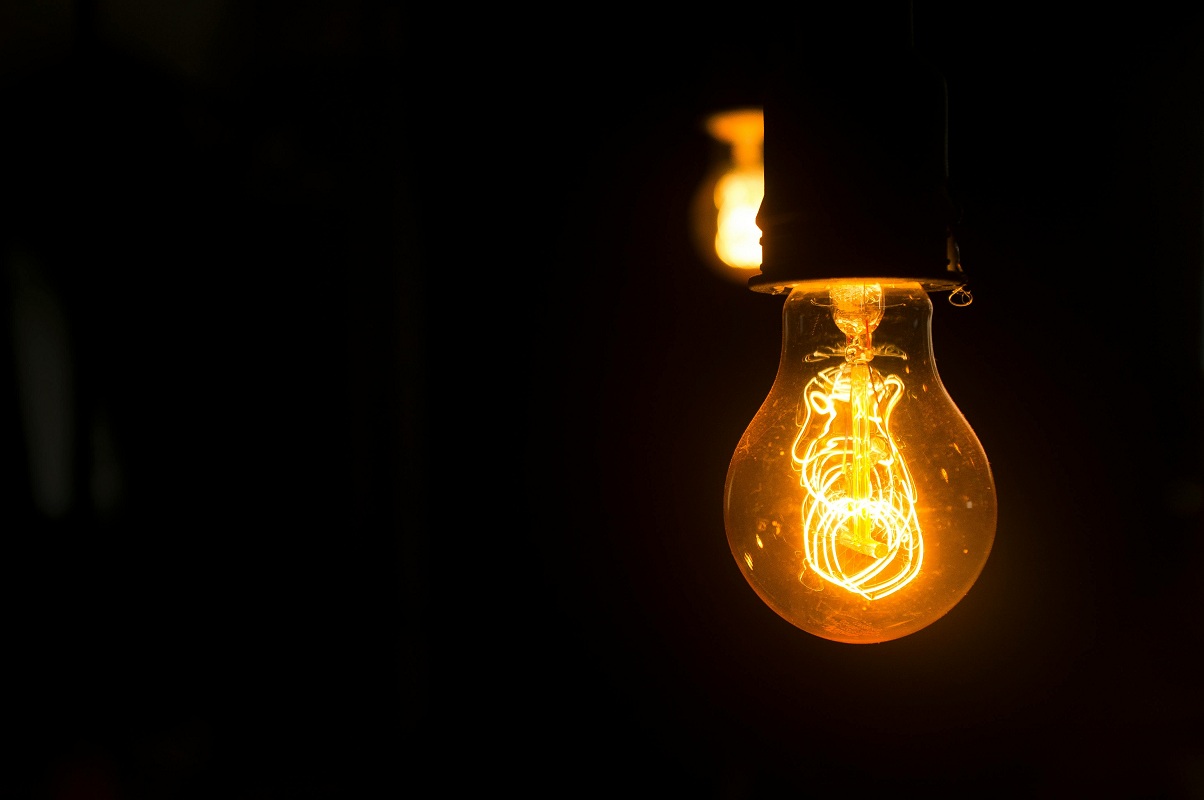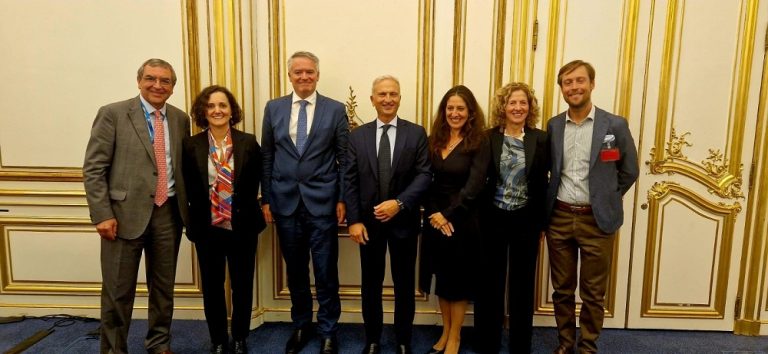The International Energy Agency (IEA) has recently published two reports, “Electricity 2025: Analysis and Forecast to 2027” and “Building the Future Transmission Grid: Strategies to Navigate Supply Chain Challenges,” which highlight the crucial importance of electricity transmission and distribution networks and the electrification of energy consumption for the emerging “electricity era.” These reports emphasize the need for significant investment, supply chain improvements, and a reshaping of national energy policies to support growing global electricity demand.
The State of the Electricity Sector and Demand Growth
Over the past decade electricity consumption has grown at twice the rate of overall energy demand and it is expected to grow six times faster through 2035, driven primarily by industrialization and electrification in emerging economies, the fast evolution of electric mobility, and the expansion of the digital sector – particularly artificial intelligence and chip manufacturing—as well as intense heat waves that lead to greater increases in demand for air conditioning systems. Indeed, global electricity consumption is already projected to increase by approximately 4% annually from 2025 to 2027. This growth is equivalent to adding more annual electricity consumption globally than Japan, following a 4.3% increase in 2024.
Most of the additional electricity demand will come from emerging and developing economies, which account for 85% of this increase. In China, for example, electricity demand has grown faster than the overall economy since 2020, with a 7% increase in 2024 and a projected 6% annual average growth through 2027. This is due in part to the quick expansion of the production of solar panels, batteries, electric vehicles, and related materials, as well as the increased use of air conditioning, electric vehicles, data centres, and 5G networks. In advanced economies, electricity demand is expected to grow steadily, but will only account for 15% of the global increase in the period 2025–2027. In the United States, electricity demand in 2024 surpassed its 2022 peak and is expected to grow at a 2% average annual rate in the period 2025–2027. In Europe, electricity consumption decreased by 3% in 2022 and continued to decline in 2023; the modest reversal of trend seen in 2024, however, is supposed to continue over the next two years.
Supply chain challenges and necessary investment
According to the International Energy Agency, the urgent need to expand and modernize transmission networks is putting global supply chains to a hard test. Prices and delivery times for essential components such as transformers and power cables have nearly doubled since 2021. Cable procurement currently takes two to three years, while for large power transformers, delivery times can extend up to four years, and even over five years for direct current (DC) cables, often used for long-distance transmission. Prices have also increased significantly, with cables nearly doubling since 2019 and power transformers increasing by approximately 75%.
Global trade in power transformers reached $13.5 billion in 2023, with an 80% increase between 2018 and 2023 for the world’s four largest exporters—including Italy, behind China, Korea, and Turkey—which alone accounted for half of total global trade in 2023. In the cable sector, Italy’s Prysmian holds a leading position, with a significant presence in the United States and Europe.
Manufacturers are investing to increase production capacity, but implementing these expansions will take time, and uncertainties remain regarding future demand and the availability of skilled labour. It is foreseen that the global workforce in grid construction, maintenance, and operation, estimated at approximately eight million people in 2023, will need to increase by at least 1.5 million by 2030 to meet projected demand.
Although global investment in power transmission grew by 10% in 2023, reaching $140 billion, the IEA also notes that this figure shall exceed $200 billion annually by the mid-2030s to meet growing electricity demand, and it should reach $250–300 billion to achieve climate goals.
Specific investments and projects in Italy
The report notes that in Italy Terna and Enel plan to allocate 67% and 55% of their respective capital expenditure for the 2024-2028 and 2025-2027 periods with a view to developing and upgrading assets and facilitating new connections.
Furthermore, among the high-voltage direct current (HVDC) interconnection projects, the Thyrrenian Link, supported by EUR 4.5 billion in REPowerEU funding (the EU plan to accelerate the clean energy transition), includes two HVDC connections linking Sicily to Sardinia and Sicily to the Italian mainland, with completion scheduled for August 2026. The Sacoi 3 project, instead, is a HVDC connection between Sardinia, Corsica, and Tuscany, designed to replace the current Sacoi 2 with a capacity of 400 MW. Italy’s coal phase-out, scheduled for 2028, will depend on the completion of these key interconnections.
Similarly, in July 2024, Italy submitted the final version of its updated New National Energy and Climate Plan (NECP), which sets an ambitious target of 63% of electricity demand coming from renewable sources by 2030 and outlines plans for significant capacity expansions, including targets of 80 GW of solar photovoltaic energy and 28 GW of wind power by 2030.
More specifically, in 2024 electricity generation from renewable sources in Italy increased by 15%, surpassing fossil fuel generation for the first time. Hydroelectricity recorded the greatest growth (+28% year-over-year), followed by solar photovoltaic energy (+18%). Renewable sources covered 50% of Italy’s electricity demand in 2024, up from 44% in 2023. Electricity demand in Italy is forecast to increase at a 1,9% average annual rate between 2025 and 2027.
The IEA reports also note that electricity prices for energy-intensive industries in Italy have been lower than those in some European countries, although the offsets for indirect CO2 emissions were only 25% in 2024—lower than in Spain (45%) and Germany (100%)—but are expected to increase to over 50% in 2025.
Evolution of National Energy Policies
With a view to overcoming supply chain challenges and supporting electricity system development, the IEA recommends eight key strategies. Firstly, improving visibility into future demand, as transparent, long-term investment plans for the electricity sector, both at the national and regional levels, are essential to guide producers and strengthen confidence in the supply chain. Better coordination between governments, transmission system operators (TSOs), regulators, developers, and producers is also crucial to assessing demand for transmission projects and ensuring timely deliveries. To prevent bottlenecks, the IEA also recommends accelerating proactive network investment, with a regulatory framework that supports anticipatory expansion and modernization.
Other recommendations include designing effective and standardized procurement frameworks that ensure price and supply volume certainty, thus encouraging producers to expand capacity and facilitating the procurement of essential components. It also emphasizes the importance of simplifying authorizations for key infrastructure by removing unnecessary administrative barriers. The IEA also believes it is appropriate to maximize existing network infrastructure through digital technologies to improve efficiency and relieve pressure on the supply chain, which can be further diversified and strengthened through collaboration with local or second-tier suppliers who meet supply needs.
Finally, the International Energy Agency (IEA) emphasizes the importance of ensuring a skilled workforce throughout the supply chain, integrating digital skills into training.
With specific reference to access to electricity, the IEA notes that significant gaps persist in sub-Saharan Africa, where 600 million people still lack access to reliable electricity. Despite progress, such as in Kenya, which is on track to achieve the seventh Millennium Development Goal (“Ensure access to affordable, reliable, sustainable and modern energy for all”), and Senegal, where ongoing projects will ensure that renewable energy will meet over 40% of demand growth by 2027, the gap remains significant.
Finally, global wholesale electricity prices fell in 2024, with a 20% average decrease in several regions, including the European Union (EU), the United States, the United Kingdom, and India. However, significant disparities persist between economies. In particular, the gap between electricity prices in the EU and the United States, although narrowing, remains high. Prices in the EU are estimated to be 160% higher in 2025 and 105% higher in 2026, underscoring the ongoing competitiveness challenge for Europe’s energy-intensive industries.








